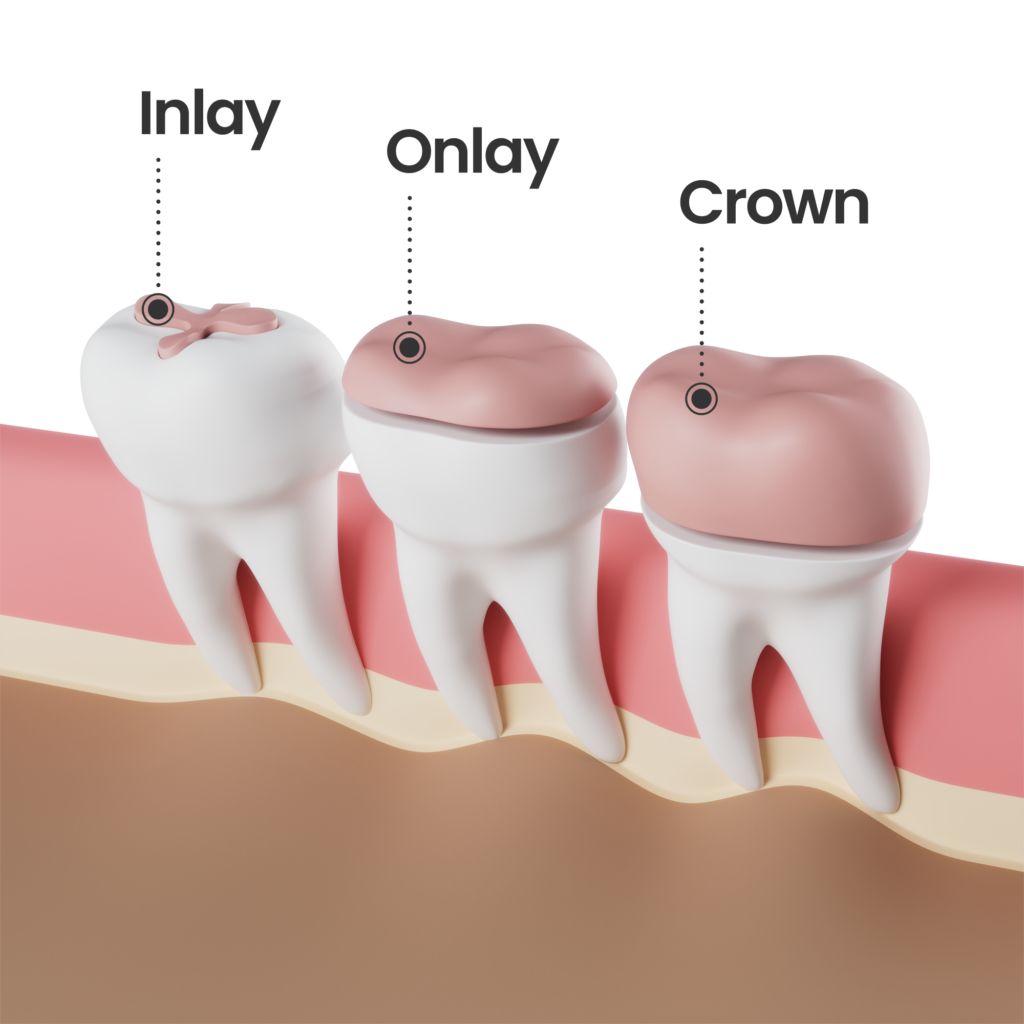Inlay/Onlay
Inlays and onlays are dental restorations used to repair teeth that have mild to moderate decay, or teeth that have been damaged due to injury. They are custom-made in a dental laboratory and then permanently cemented to the tooth by a dentist. Both inlays and onlays are typically made from materials like porcelain, composite resin, or gold.

Differences between inlays and onlays:
Inlays:
- An inlay is a restoration that fits into the chewing surface of a tooth, particularly within the indented area at the center of the tooth.
- Inlays are used when the damage or decay is limited to the cusp (pointed or elevated part) of the tooth and doesn’t extend to the outer edges.
- They are an ideal option when a filling might not be sufficient but a full dental crown is not necessary.
Onlays:
- An onlay is a more extensive restoration that covers the entire chewing surface of a tooth and extends over one or more cusps.
- Onlays are used when the damage or decay is more extensive, reaching one or more of the tooth’s cusps, but the overall structure of the tooth is still sound.
- They provide more coverage than inlays and are often referred to as partial crowns.
The process for getting inlays or onlays typically involves two appointments:
First Appointment:
- The dentist removes the decayed or damaged portion of the tooth.
- An impression or digital scan of the prepared tooth is taken.
- A temporary filling is placed to protect the tooth while the permanent inlay or onlay is being fabricated in a dental laboratory.
Second Appointment:
- The temporary filling is removed, and the custom-made inlay or onlay is placed on the tooth to check for fit and comfort.
- Once confirmed, the inlay or onlay is permanently bonded to the tooth using a strong adhesive.
- The restoration is polished to ensure it blends seamlessly with the natural tooth.
Inlays and onlays offer several advantages, including preservation of healthy tooth structure, durability, and a natural appearance. They are considered more conservative than full dental crowns while providing greater coverage than traditional fillings.
The choice between an inlay and an onlay depends on the extent of the damage or decay and the location of the affected tooth. Your dentist will assess your specific situation and recommend the most appropriate treatment option for your dental needs.
